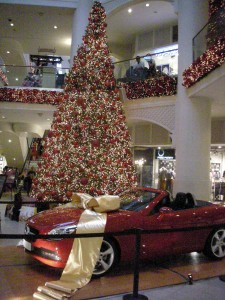 It’s mid-November and the shopping malls in Manila are filling up with Christmas trees, Santas and arctic animals, while the air vibrates with schmalzy Christmas songs. As we reach for our Christmas lists, you may think my title is stating the terribly obvious. Yet all too often, in the maelstrom of marketing and Christmas shopping, the true spirit of Christmas gets drowned out by muzak and spruikers, gaudy baubles and reams of environmentally unfriendly packaging.
It’s mid-November and the shopping malls in Manila are filling up with Christmas trees, Santas and arctic animals, while the air vibrates with schmalzy Christmas songs. As we reach for our Christmas lists, you may think my title is stating the terribly obvious. Yet all too often, in the maelstrom of marketing and Christmas shopping, the true spirit of Christmas gets drowned out by muzak and spruikers, gaudy baubles and reams of environmentally unfriendly packaging.
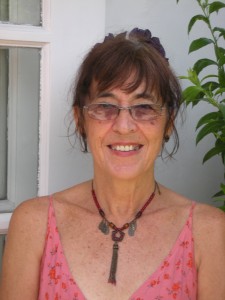 Jennifer Wallum M.B.E. is one of Santa’s Christmas elves 365 days of the year. This generous, energetic English woman arrived in the Philippines thirty years ago and is now a firm fixture. I dropped in to her Makati home to find her sitting on a floor piled high with attractive boxes made from recycled packing crates and sugar cane stems. Her living room, reflecting a lifetime of adventures, was an eclectic mix of Cambodian Buddhas and Indonesian masks, pots and urns, stained glass, glass cabinets, and a forest of occasional tables and armchairs. The thought of ever having to pack up all that memorabilia made me feel slightly queasy!
Jennifer Wallum M.B.E. is one of Santa’s Christmas elves 365 days of the year. This generous, energetic English woman arrived in the Philippines thirty years ago and is now a firm fixture. I dropped in to her Makati home to find her sitting on a floor piled high with attractive boxes made from recycled packing crates and sugar cane stems. Her living room, reflecting a lifetime of adventures, was an eclectic mix of Cambodian Buddhas and Indonesian masks, pots and urns, stained glass, glass cabinets, and a forest of occasional tables and armchairs. The thought of ever having to pack up all that memorabilia made me feel slightly queasy!
As I sat down beside her, I was immediately given the task of sticking small pieces of tape onto a set of boxes to delineate the different coloured dishes inside. It was fascinating just to sit back and listen to Jenny talk as I cut and pasted and coloured in. Jumping from one topic to another, assuming knowledge I didn’t have, pausing for a second to explain before racing on, it felt as if I was sitting beside the Energizer Bunny. ‘Blithering on’ she calls it, but I loved it.
Passing me a pamphlet, she told me that everything I needed to know was contained on its pages, but I found I was just as interested in the personal story of this emphatic, expansive, and singular woman, who has spent her years in Manila, not as the archetypal expat, playing bridge and attending an endless round of coffee mornings, but displaying a humanitarian, pro-active patronage towards her host country that is utterly inspiring.
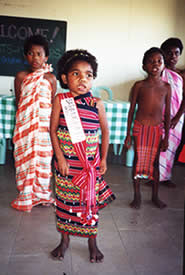 Jenny’s work began after the eruption of Mount Pinatubo devastated a vast region just north of Manila in June 1991. Amongst those most affected by the natural disaster were an indigenous tribe, the Aeta, reputedly the earliest inhabitants of the Philippines, who had been living healthy and happy lives in the forests and mountains of northern Luzon, wanting for nothing, and ‘ looked after by God’. Mining, deforestation, illegal logging, and slash-and-burn farming have all caused a steady decline in the Aeta population, but Pinatubo’s rivers of lahar swept them dramatically from the forests and a way of life they had enjoyed for thousands of years, and cast them adrift in the twentieth century.
Jenny’s work began after the eruption of Mount Pinatubo devastated a vast region just north of Manila in June 1991. Amongst those most affected by the natural disaster were an indigenous tribe, the Aeta, reputedly the earliest inhabitants of the Philippines, who had been living healthy and happy lives in the forests and mountains of northern Luzon, wanting for nothing, and ‘ looked after by God’. Mining, deforestation, illegal logging, and slash-and-burn farming have all caused a steady decline in the Aeta population, but Pinatubo’s rivers of lahar swept them dramatically from the forests and a way of life they had enjoyed for thousands of years, and cast them adrift in the twentieth century.
So Jenny founded Entrepreneur Volunteer Assistance Charity Foundation (EVACF) in the wake of the Pinatubo disaster, to help preserve those indigenous Aeta communities that had been ravaged by the volcano. Jenny’s plan was to prevent the displacement and degradation of these people, to whom ‘civilization was more dangerous than the forests’ and to help them rebuild their lives. With this in mind, Jenny designed a logo to inspire hard work and self-determination:
- The shining sun inspires positive thinking
- The moon within the sun inspires the need for interaction to succeed.
- The volcanic mountain, a powerful force, symbolizes strength and effort.
- Six dots represent the major Philippine volcanoes and the eruption that created the need for EVACF.
- Lapping waves represent the challenges of the rivers of hot lahar.
- People holding hands, cooperating to withstand the forces of nature, supporting the old and infirm.

EVACF has been responsible for setting up micro-financing and training programs, educational scholarships and livelihood projects, for building schools and providing equipment. Unlike some charities, EVACF was carefully designed to avoid imposing its own standards on the Aeta, and the foundation would only provide help when requested by the elders of the community. The plan was to allow the victims of Pinatubo to help themselves.
The most visible and visual project is the local pottery. Mt. Pinatubo ash glaze is made from’ the finest of fine ash’. The completed stoneware is non-toxic, lead-free, microwave and oven-proof. It is sold in selected stores in Metro Manila to raise funds for Mt. Pinatubo livelihood projects and University scholarships for Aeta students, as well as helping to fund construction of the Traditional Origins Ethnic Education Schools (TOE2s) in remote Aeta settlements.
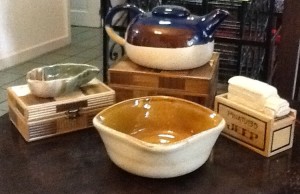 The selection of items available continues to grow: squat, cuddly teapots, (you will know what I mean when you see them); chunky espresso cups; various bowls and serving dishes; a deep, wave-rimmed pot for holding cooking utensils, a plant, or a bottle of wine on ice; a popular angel tea bag holder in the prettiest little gift box: an imaginatively curved dip platter, and a pineapple plate. Colours range from deep sea blue, to sandy brown, from antique white (like clotted cream) and a green reminiscent of Thai Celadon. There is a range of pottery tankards, salt and pepper shakers and an unusual milk jug and sugar bowl set. And, finally, Jenny has designed an amazing array of cards, including some very sweet Christmas cards for which those in the know are already queuing.
The selection of items available continues to grow: squat, cuddly teapots, (you will know what I mean when you see them); chunky espresso cups; various bowls and serving dishes; a deep, wave-rimmed pot for holding cooking utensils, a plant, or a bottle of wine on ice; a popular angel tea bag holder in the prettiest little gift box: an imaginatively curved dip platter, and a pineapple plate. Colours range from deep sea blue, to sandy brown, from antique white (like clotted cream) and a green reminiscent of Thai Celadon. There is a range of pottery tankards, salt and pepper shakers and an unusual milk jug and sugar bowl set. And, finally, Jenny has designed an amazing array of cards, including some very sweet Christmas cards for which those in the know are already queuing.
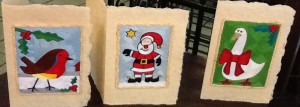 If you would be interested in helping EVCAF, from making a donation, to packing pottery, to actively participating in the livelihood projects, Jenny is always keen for more volunteers. So visit the website: www.evacf.org or email Jenny directly on evacf_org@yahoo.com and give a little extra – and something of yourself – at Christmas.
If you would be interested in helping EVCAF, from making a donation, to packing pottery, to actively participating in the livelihood projects, Jenny is always keen for more volunteers. So visit the website: www.evacf.org or email Jenny directly on evacf_org@yahoo.com and give a little extra – and something of yourself – at Christmas.
*Adapted from article published in ANZA Magazine December 2012.
